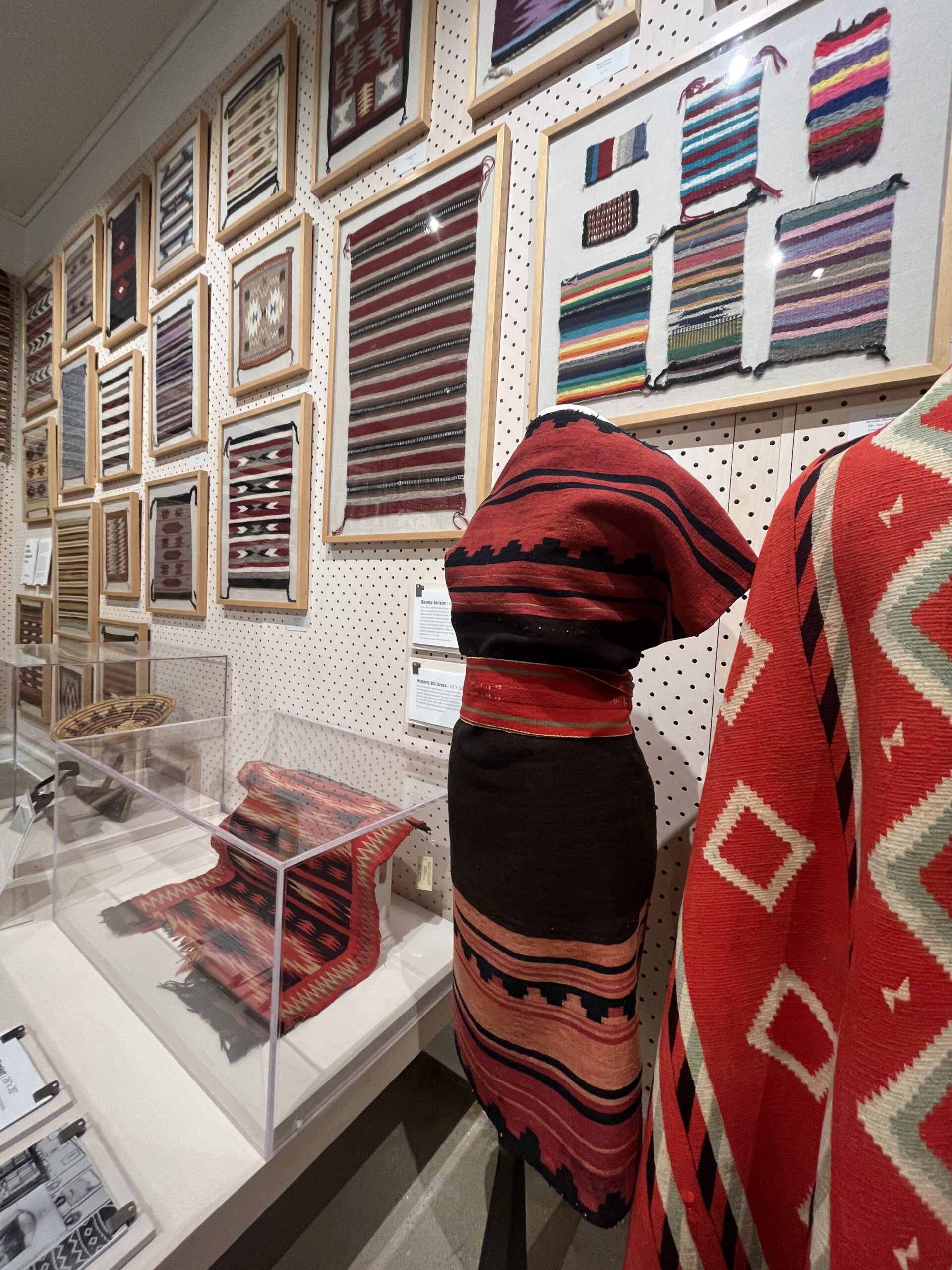Some information may be outdated.
“The People’s Tapestry: Weaving Tradition in Navajo Culture” is a current exhibit at the Moab Museum, featuring a variety of styles of Navajo textiles, as well as renderings of the various ways textiles were used. In this column throughout the summer, the Museum team will feature a variety of weaving styles and their associated backgrounds and stories.
This exhibition is a celebration of the magnificent weavings created by the Diné (which means “the people” in Navajo). The significance of Diné textiles transcends artistic expression; weavers beautify their world through the spiritual act of weaving and integrate their art into the web of everyday life. The Navajo weaver’s song declares, “with beauty, it is woven.”
How are Navajo weavings worn?
Throughout the summer, the Museum has featured a variety of distinct Navajo textile designs. Now, we explore a style of weaving that is worn. The “Biil” (pronounced “beel”) is a dress comprised of two identical panels (some say woven side by side) and then sewn together leaving openings for the neck and arms. The Biil, often referred to as a “rug dress,” was commonly worn by Navajo women prior to the “Long Walk,” which was the forced removal of Navajo peoples from their homelands by the United States government in the 1860s. This time period was preceded by the Treaty of Guadalupe Hidalgo in 1848, a treaty that positioned the U.S. to aggressively assume control of land in the Southwest, and thus the homelands of many Tribal Nations.
The Biil is worn with a belt or band around the waist and is still worn today by Navajo girls and women for special occasions like graduations and weddings. “The People’s Tapestry: Weaving Tradition in Navajo Culture” features two Biils: one from the John and Louisa Wetherill Collection, and another from the Kel Darnell and Marc MacDonald Collection. On display also is a man’s serape, a distinct textile developed prior to the creation of Navajo rugs that is worn draped across the shoulders.
The Biil is one of two items still produced by Navajo weavers for personal wear, though they are rare and are not often woven for commercial purposes, like Navajo rugs. The oldest known example of this weaving, which features a tighter weave, was worn by Juanita, wife of Chief Manuelito, around 1868.
The Moab Museum is dedicated to sharing stories of the natural and human history of the Moab area. This is part of a series highlighting distinct textiles and styles displayed in the Museum’s temporary exhibition “The People’s Tapestry,” displayed summer-winter 2023. To explore more of Moab’s stories and artifacts, find out about upcoming programs, and become a Member, visit www.moabmuseum.org.
Appreciate the coverage? Help keep local news alive.
Chip in to support the Moab Sun News.





